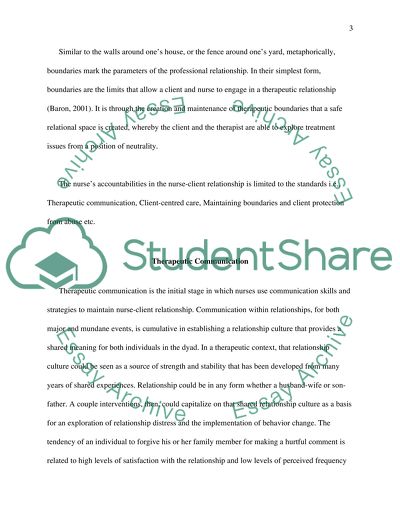Cite this document
(“Maintaining Therapeutic Relationship Essay Example | Topics and Well Written Essays - 3000 words”, n.d.)
Maintaining Therapeutic Relationship Essay Example | Topics and Well Written Essays - 3000 words. Retrieved from https://studentshare.org/health-sciences-medicine/1515802-maintaining-therapeutic-relationship
Maintaining Therapeutic Relationship Essay Example | Topics and Well Written Essays - 3000 words. Retrieved from https://studentshare.org/health-sciences-medicine/1515802-maintaining-therapeutic-relationship
(Maintaining Therapeutic Relationship Essay Example | Topics and Well Written Essays - 3000 Words)
Maintaining Therapeutic Relationship Essay Example | Topics and Well Written Essays - 3000 Words. https://studentshare.org/health-sciences-medicine/1515802-maintaining-therapeutic-relationship.
Maintaining Therapeutic Relationship Essay Example | Topics and Well Written Essays - 3000 Words. https://studentshare.org/health-sciences-medicine/1515802-maintaining-therapeutic-relationship.
“Maintaining Therapeutic Relationship Essay Example | Topics and Well Written Essays - 3000 Words”, n.d. https://studentshare.org/health-sciences-medicine/1515802-maintaining-therapeutic-relationship.


